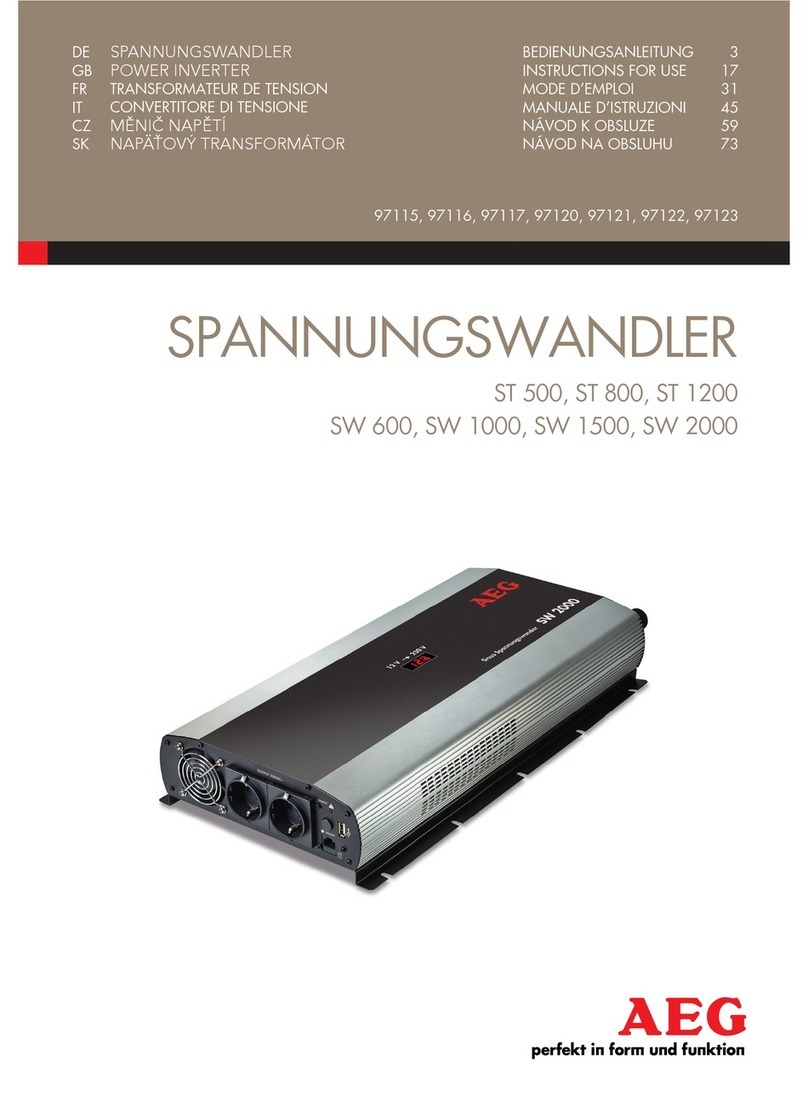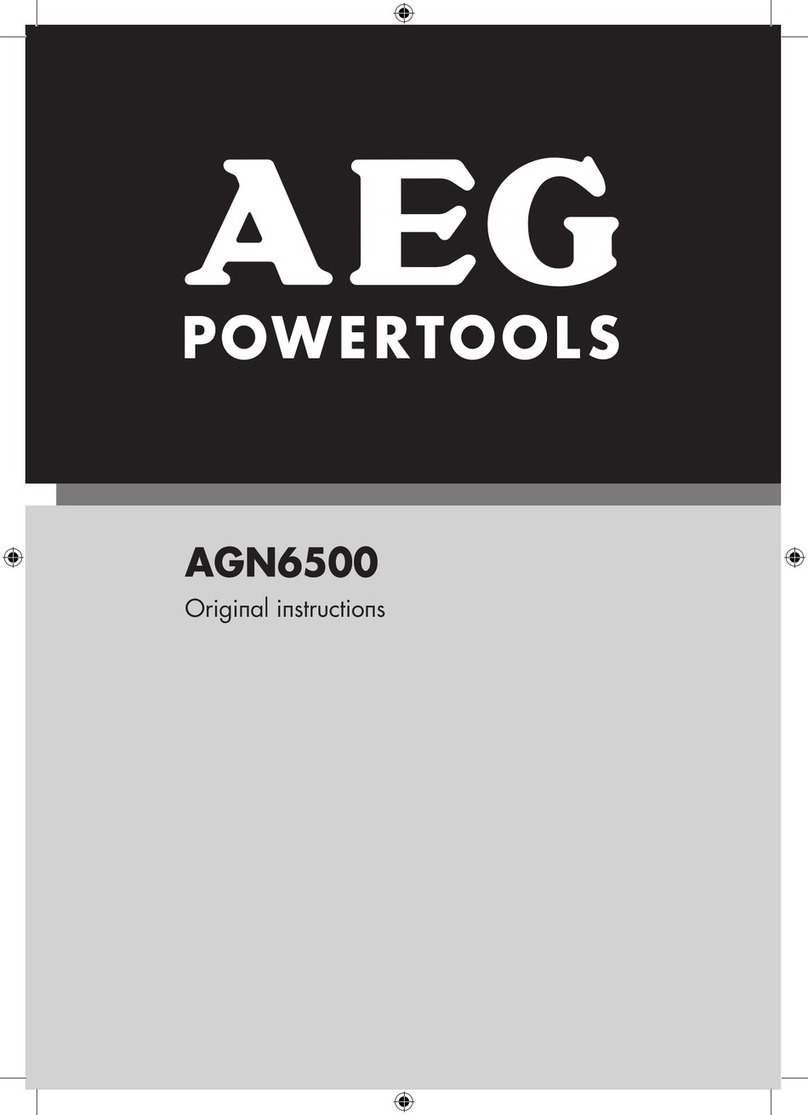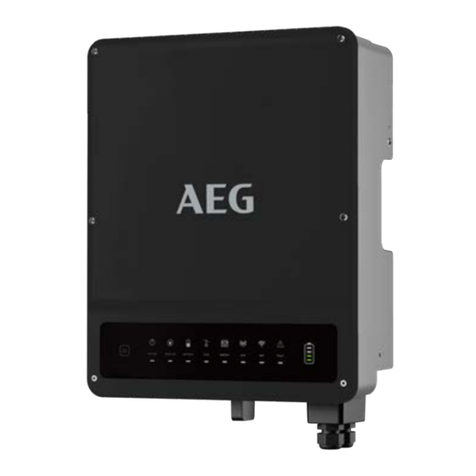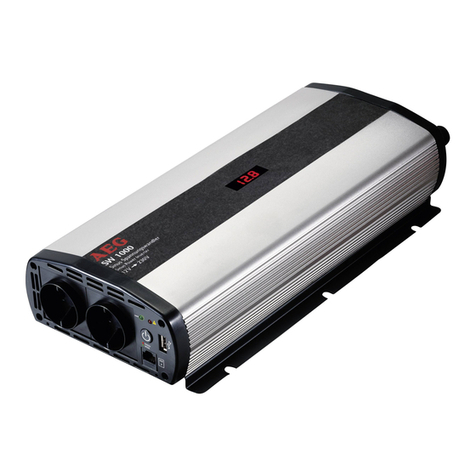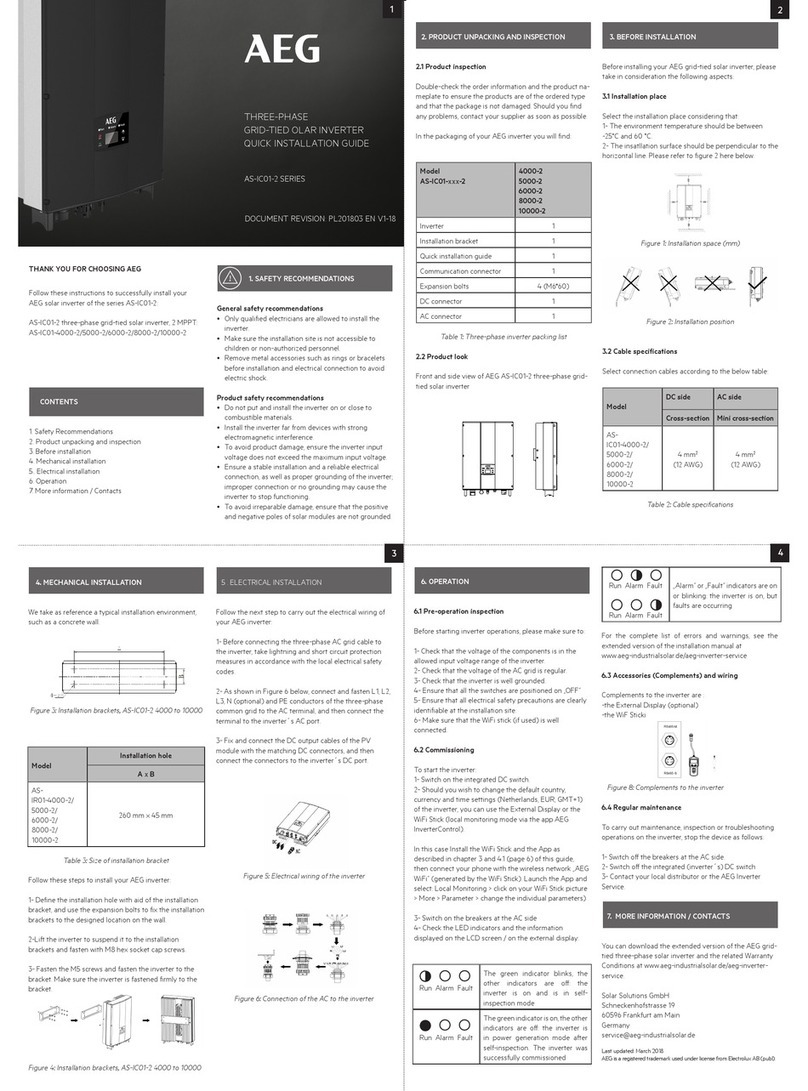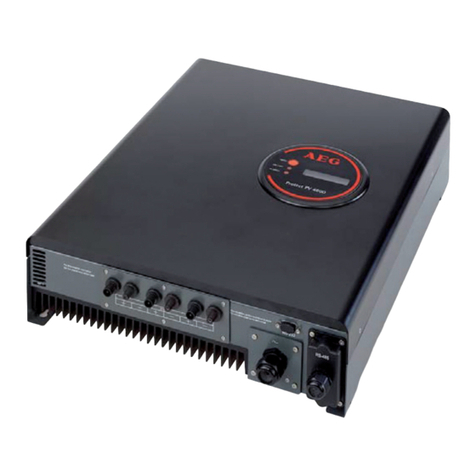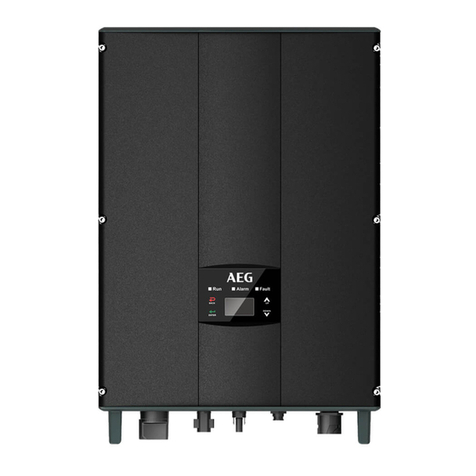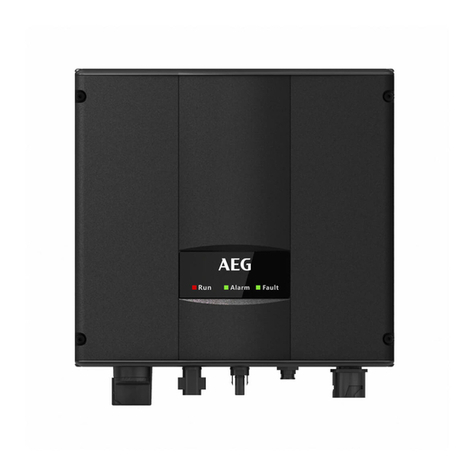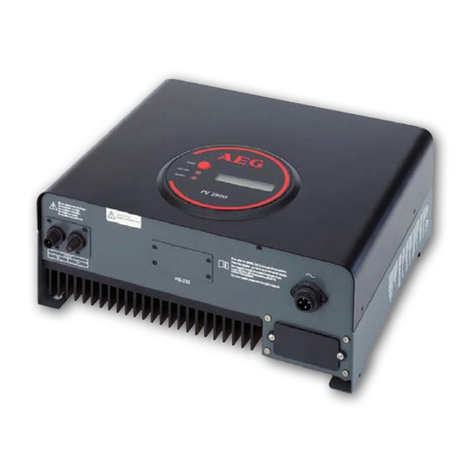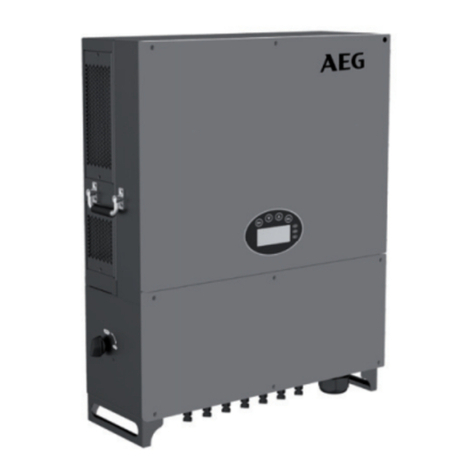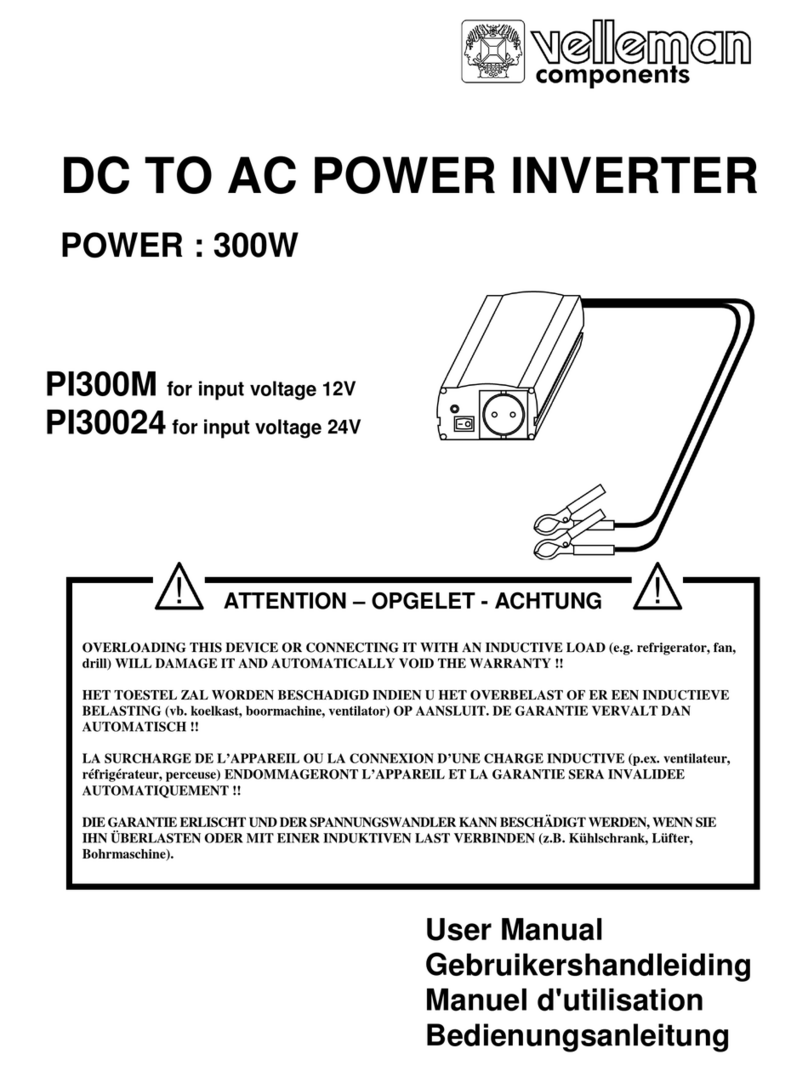3
PD201709 AEG GRID-TIED THREE-PHASE SOLAR INVERTER (4-10 kW) V.1-17 EN
3
4. Operation..........................................................................................................................................................................................................................................................22
4.1 Inspection before operation .................................................................................................................................................................................................22
4.2 Grid-tied operation .......................................................................................................................................................................................................................22
4.3 Stopping..................................................................................................................................................................................................................................................23
4.4 Maintenance.......................................................................................................................................................................................................................................23
4.4.1 Regular maintenance ......................................................................................................................................................................................................23
4.4.2 Maintenance guide ...........................................................................................................................................................................................................24
5. Display panel.................................................................................................................................................................................................................................................24
5.1 LED indicators....................................................................................................................................................................................................................................25
5.2 Operation panel................................................................................................................................................................................................................................26
5.3 LCD display ..........................................................................................................................................................................................................................................26
...................................................................................................................................................................................................................................................................................26
5.4 Functions operation..................................................................................................................................................................................................................... 27
5.4.1 Monitoring parameters ..................................................................................................................................................................................................27
5.4.2 History ...........................................................................................................................................................................................................................................28
5.4.3 Statistics.......................................................................................................................................................................................................................................28
5.4.4 Parameter settings............................................................................................................................................................................................................29
5.4.5 System Information........................................................................................................................................................................................................... 35
5.4.6 Faults ..............................................................................................................................................................................................................................................35
5.4.7 Inverter control...................................................................................................................................................................................................................... 35
5.4.8 Mode settings ........................................................................................................................................................................................................................ 37
5.5 Functions operation.....................................................................................................................................................................................................................37
6. Monitoring communication.............................................................................................................................................................................................................39
6.1 Standard communication........................................................................................................................................................................................................39
6.2 Optional communication........................................................................................................................................................................................................40
6.3 AEG WiFi200 module................................................................................................................................................................................................................40
6.3.1 AEG WiFi200 product overview...........................................................................................................................................................................40
6.3.2 Monitoring solutions.........................................................................................................................................................................................................41
6.3.3 Installation.............................................................................................................................................................................................................................43
7. Troubleshooting ....................................................................................................................................................................................................................................... 48
8. Contact............................................................................................................................................................................................................................................................... 49
9. Annex: Warranty Card......................................................................................................................................................................................................................... 50








